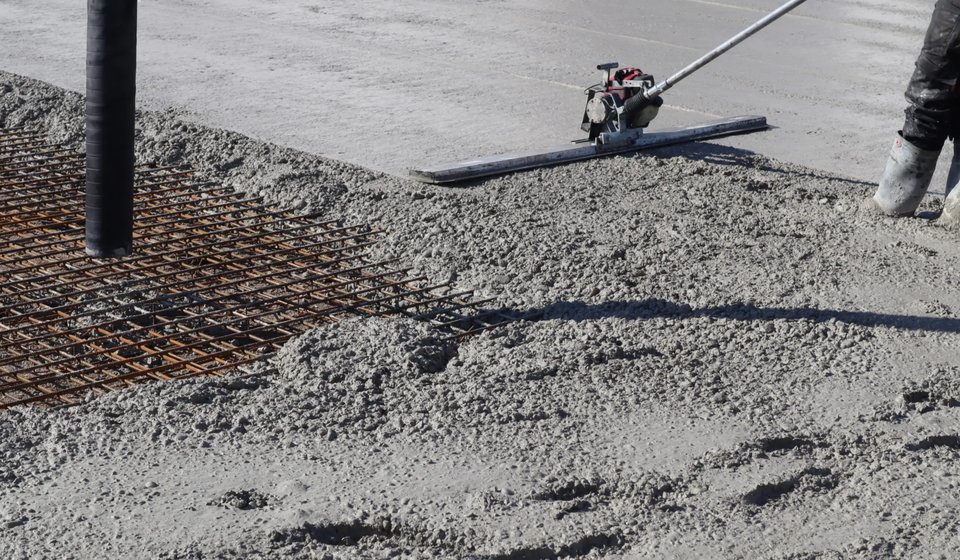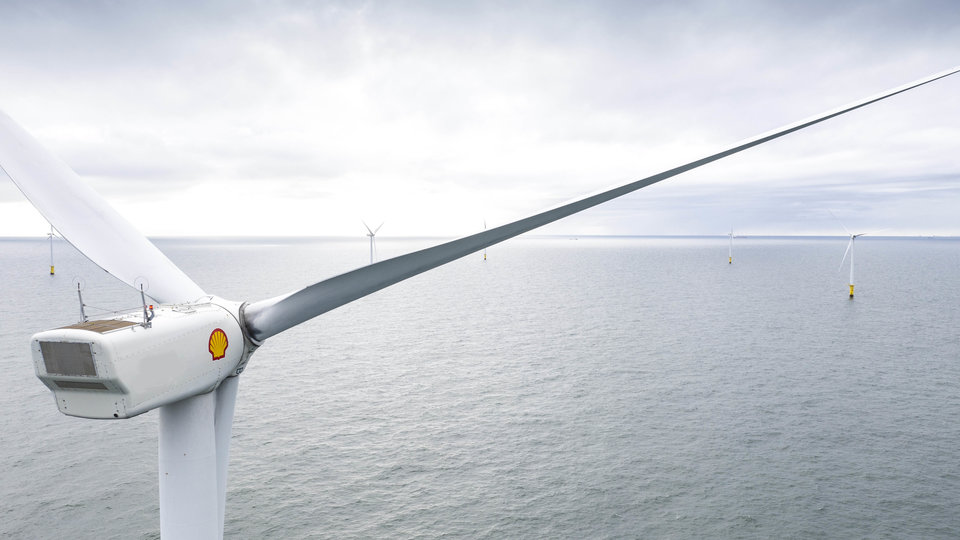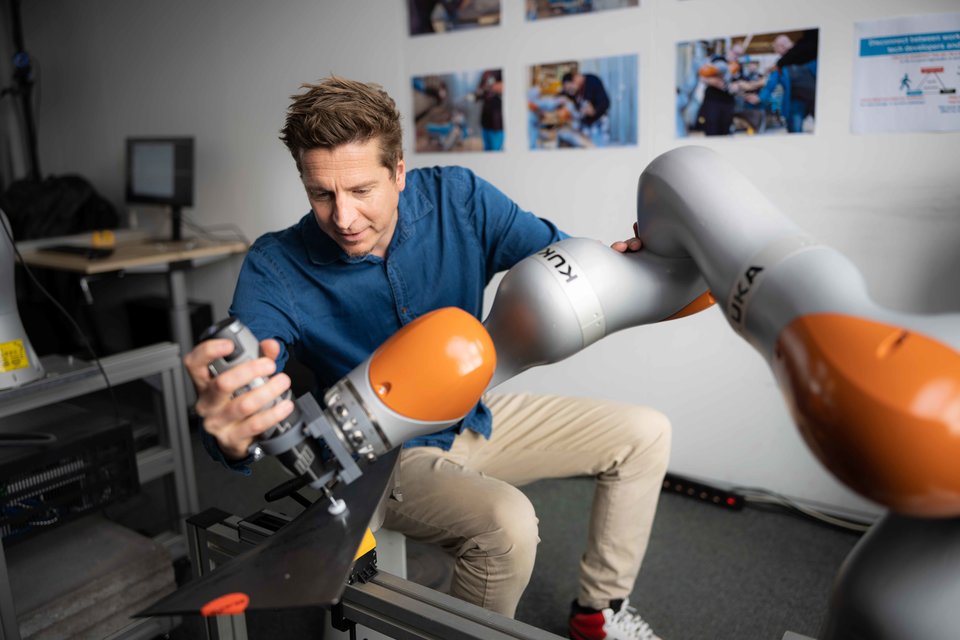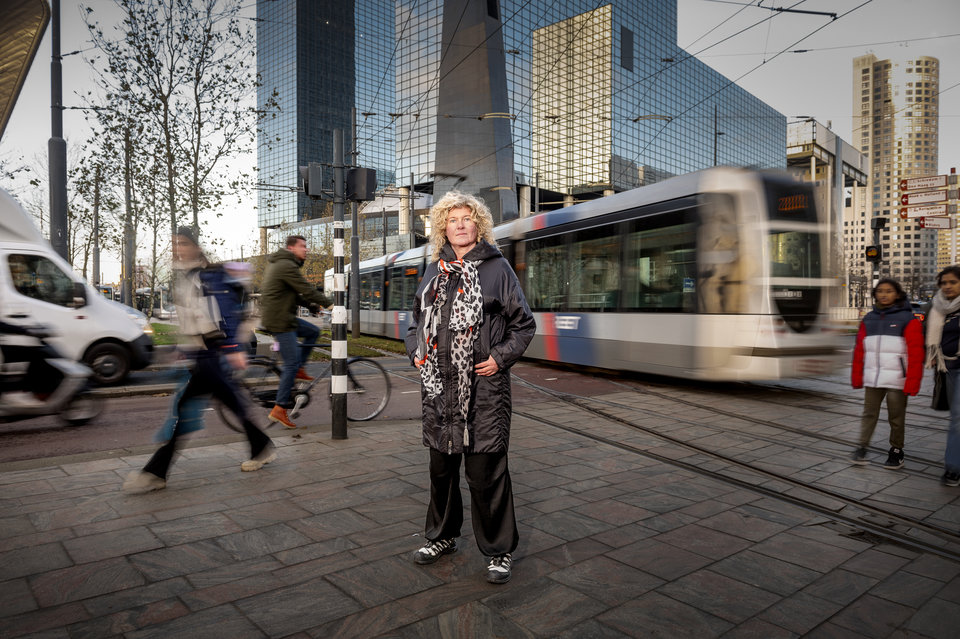The ecological impact of offshore energy: How to balance growth and nature?
As you depart from Schiphol and look out over the North Sea, you’ll see 'islands' of slender, white wind turbines looming below. It’s a serene, futuristic landscape that stands in stark contrast to the deep blue sea. Although the North Sea wind farms already have a capacity of 4.5 gigawatts, the Netherlands continues to plot substantial growth, aiming for 21 gigawatts by 2030 and 70 gigawatts by 2050. Wind technologists eagerly sink their teeth into the challenge of designing bigger, more powerful turbines, while others focus on those tried and tested drivers of progress: cost reduction and optimisation. Although every effort is being made to achieve the ambitious Dutch climate goals, there are also signs that the rapid expansion of wind farms in the North Sea could cause unintended ecological damage. The last thing we want is for our energy ambitions to cause irreversible harm to marine life or, as with the nitrogen crisis, run into major ecological obstacles that bring the construction sector to a grinding halt. In other words, how do we guarantee that our energy ambitions do not harm the fragile North Sea ecosystem?
By Irene Salverda • November 5, 2024

Tim Raaijmakers
TU Delft Faculty of Civil Engineering and Geosciences
Migratory birds have to avoid the turbines, and other species suffer from or even succumb to the noise produced by offshore installation projects. The rapid expansion of wind farms off the Dutch coast is causing increasing concern about their ecological impact. Tim Raaijmakers, programme manager of TU Delft's Wind Energy Institute, stresses the importance of taking the ecological risks seriously. “Here in Delft, we look beyond technological developments alone and also examine the ecological corollaries of rapid growth”, he explains.
The direct impact on birds and sea mammals, for instance, is highly visible but wind farms also have less immediately visible effects. “In fact, they have the potential to affect entire ecosystems”, warns Raaijmakers. “The tidal currents and waves around the foundations cause eddies and turbidity that could harm the food chain by mixing sea layers.”
Ecological conundrums
The power cables between the wind turbines may also have an impact, the exact consequences of which are still unknown. “Ecologists suspect that the electromagnetic fields created by these cables disrupt the navigation and foraging behaviour of sharks and rays”, Raaijmakers explains. His team has now joined forces with ecologists from Wageningen University & Research, the University of Amsterdam and Leiden University to investigate these issues. “We should take the nitrogen crisis as an object lesson, so that the building process doesn’t grind to a halt 10 years from now due to ecological issues that could have been prevented with more diligent research.”
EcoWind Toolbox
That collaboration has already produced surprising insights, revealing risks as well as opportunities. Raaijmakers holds up a cartoon of a contented flatfish lounging in a luxurious 'fish hotel' built into a foundation. “It’s not actually that cushy”, he admits, “but we are working with ecologists to figure out ways for the foundations and accompanying seabed protection works to double as breeding grounds and reefs.” However, the foundations will have to be redesigned without jeopardising cost efficiency and robustness.
The EcoWind Toolbox programme proposal was recently submitted to NWO Perspective and promises a technological toolbox packed with solutions to ecological challenges. “We’re looking to examine ecological impact from all sides and to harness the insights for developing a flexible decision-making model that can adapt to new insights gleaned from ecological monitoring.”
Wind farm testing
Raaijmakers relishes the prospect of setting up more lines of research in concert with ecologists and is a firm proponent of installing offshore test rigs in wind farms to learn how to build truly ecologically-aware structures. “It won’t be cheap but it will help the Netherlands maintain its position at the bleeding edge of research and technology.”

Reindert Nijland
Wageningen University & Research
According to Reindert Nijland, associate professor of molecular marine ecology at Wageningen University & Research, the fact that wind farms affect the North Sea ecosystem is beyond dispute. “We all agree that the Netherlands has no other option but to achieve its ambitious climate targets and that offshore wind energy is a crucial part of the accompanying energy transition. That being said, we must avoid causing irreparable ecological damage by rushing headfirst into countless construction projects.” Nijland’s face lights up when he talks about the rich North Sea ecosystem: “Just before the summer, I spent a week diving. The underwater world is one of unimaginable wealth: cod, rocks covered with anemones and soft coral, enormous crabs and lobsters. Despite large-scale fishing and shipping, our North Sea is home to a veritable treasure trove of life.”
Disturbance, rest and recovery
For several years, Nijland and his colleagues have been closely involved in research into ecological changes around offshore wind farms and have observed both negative and positive effects. “The ban on fishing around wind farms means that the seabed is given time to rest and recover after the installation process. New species settle around the foundations and spawning grounds and reef-like structures emerge that may have a beneficial effect on the food chain”, he explains. However, although the installation itself is brief, it causes significant disturbance and produces underwater noise and vibrations that can drive away or even kill animals.
The long-term effects of offshore wind farms are still largely unknown. Nijland stresses the importance of oversight: “It’s crucial that we embed proper monitoring into offshore construction processes. At the same time, we have to keep building while developing technologies to reduce ecological impact. We need ecological stepping stones to keep moving forward.”
Nature-based solutions
Partnerships with TU Delft’s technologists have already sparked many new ideas and projects. “There are great opportunities for reefs forming on the foundations, which would be an excellent nature-based solution”, Nijland begins. “While we have lofty aspirations, the technological know-how of our colleagues from Delft keeps us grounded by pointing out that not all species can survive the enormous forces produced by waves during storms.”
Nijland’s main concern is the rapid pace at which new wind farms are springing up. “We need to make sure there’s enough time and space for thorough ecological research and embedding sound monitoring instruments to understand how the aggregate ecological impact will affect the North Sea and how we can prevent irreversible damage.”

Stas Verichev
Vibrotwist
Imagine a gigantic pile disappearing effortlessly into the ground without so much as a peep or even a single vibration. The new method aptly known as Gentle Driving of Piles (GDP) gently ‘sinks’ wind turbine foundations into the seabed and the vibrations produced in the process are barely perceptible. This innovative technology is being developed by Vibrotwist, a spin-off from TU Delft helmed by creative minds Stas Verichev and Professor Andrei Metrikine.
“GDP has the potential to drastically reduce the environmental impact of wind farm installation by reducing underwater noise and harmful vibrations in the seabed”, Verichev explains. Traditionally, piles are driven into the seabed with great force, with bubble curtains used as sound dampeners. The continued demand for more powerful turbines with foundations becoming bigger and heavier means that this technology alone is no longer enough. According to Verichev, “Vibrotwist is a sustainable alternative to bubble curtains, which cause all sorts of delays and require countless extra vessels. You only need a single vessel for GDP, which makes it more efficient and better for the environment.”
Leader in offshore technology
In addition to Vibrotwist, other quiet technologies are also being developed to reduce the impact of installing foundations, including Vibrojet technology by GBM Works, which uses water injection to dampen vibrations. IQ piling from IHC IQIP is a pulse hammer that combines vibratory piling with a controlled impact system. “The Netherlands is a leader in offshore construction and the development of new technologies”, says Verichev, “but we have to keep investing in innovative research like GDP. We can’t afford to rest on our laurels.”
100% reuse
Verichev’s team and offshore company Ampelmann are developing prototypes that are being tested on increasingly large piles and can withstand impact and heavy loads. Tests have already been carried out at the Maasvlakte but the company plans to test at sea soon. “GDP can be used for the pile installation and removal process, enabling 100% reuse of materials while ensuring that sites can be reused for new wind turbines”, Verichev concludes.

Florentine van der Wind
Ministry of Climate and Green Growth
“The North Sea is already under great pressure”, says Florentine van der Wind, Offshore Wind & Nature coordinator. “Shipping, fishing and pollution have tremendously negative effects, not to mention climate change. The ecological challenges posed by offshore wind energy are just another brick in the wall.” The North Sea countries have different rules regarding the protection of the natural environment, which further complicates the process of protecting the fragile ecosystem. “We urgently need to work together and come up with a joint strategy to protect biodiversity while realising our sustainable energy ambitions. By joining forces, we can keep the North Sea healthy for the foreseeable future.” The North Sea Agreement, with its provisions on the rollout of wind farms in the North Sea, is a promising stepping stone.
Doing a good job
“While there’s still a lot we don’t know about the effects on the ecosystem, the Netherlands is doing a good job”, says Van der Wind, citing as an example the Ecological Programme for Dutch Offshore Wind (Nederlandse Wind op Zee Ecologisch Programma WOZEP), which has studied the effects of offshore wind farms on protected species since 2016. “We also factor in natural values as much as possible when designating areas for offshore wind energy. Whatever happens, there will be no wind farms in Natura2000 areas.” The contracts for large-scale wind farms will be awarded as part of a tender process administered by the Ministry of Climate and Green Growth, which will reward innovation and nature protection. Mandatory mitigation measures, such as standards for underwater noise, are included in the corresponding plot decisions. “Under the Framework for Assessing Ecological and Cumulative Effects, WOZEP is continuously refining ways to assess the impact of offshore wind farms and thus promoting innovation to further reduce the impact of wind turbines.”
“Keep pushing forward with deliberate innovation”
“We desperately need to accelerate the energy transition if we are to reach our climate targets”, says Van der Wind, “but that doesn’t mean we can simply neglect its ecological impact. Still, we need to keep pushing forward with deliberate innovation.” Measures should be effective, feasible and affordable. “That’s what makes triple helix collaboration so important.”
Interested in collaboration?
Interested in business collaboration or seeking knowledge and insights on your policy themes?
Contact us







![[Translate to English:] [Translate to English:]](https://filelist.tudelft.nl/_processed_/2/8/csm_mayht-3_ae000d269f.jpg)




